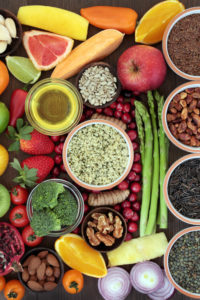E. Coli: How to Protect Yourself From This Bacteria’s Dangerous Strains
Whether you live in the United States or Canada, you’ve probably been hearing a lot about “E. coli” in the news over the past few months. That’s because since roughly mid-November 2017, dozens of people have become ill, and tragically, two people have died in Canada and the U.S. from the E. coli infection, which was linked to contaminated romaine lettuce.
The Canadian Food Inspection Agency (CFIA) determined that romaine lettuce has been the source of the recent E. coli outbreak in five eastern provinces. In the U.S., the Centers for Disease Control (CDC) determined this E. coli outbreak involved in more than a dozen states has a “closely related genetic signature” to the strain identified in Canada’s cases, of which there have been more than 40 to date. The source of the romaine lettuce has not yet been identified. We do know that in the fall and winter months, lettuce is typically imported from warmer regions, such as California or Mexico. Contamination can take place at any point during farming and distribution processes.
Get Your Nutrition Guide
Do you want to eat foods that help you feel better, stay slim, and avoid diet-related diseases? Do you want to be healthier by eating delicious “super” foods?
If so, claim your FREE copy, right now, of the definitive nutrition guide on living a longer, healthier, happier life.
What is E. Coli?
Escherichia coli bacteria typically live inside the intestines of healthy people and animals. This is essentially where the bacteria comes from. Most varieties of this bacteria are harmless. Unfortunately, there have been some dangerous strains, such as the O157:H7 strain (as in the recent case of contaminated romaine lettuce), which can cause severe abdominal cramps, bloody diarrhea, and vomiting. You can be exposed to this E. coli strain by consuming contaminated water or food—especially raw vegetables and undercooked ground meat. Healthy adults will usually recover from the infection within a week. Older adults, young children and individuals with a weakened immune system have a greater risk of developing kidney failure (hemolytic uremic syndrome), which can be life-threatening.
Common Sources of E. Coli
It doesn’t take much—E. coli can cause an infection when you ingest even small amounts. Typical causes of infection include contaminated food or beverages, such as:
- Raw fruits and vegetables. Animal “runoff” from farms can contaminate fields where the fruits and vegetables we eat grow. Leafy vegetables, such as lettuce and spinach are especially at risk of contamination, and that’s why it’s so important to wash those leafy vegetables (leaf by leaf!) extra carefully before consuming them!
- Ground meat. Slaughtering processes can put ground meat at risk of contamination because E.coli bacteria can spread directly from the animal’s intestines to the meat.
- Unpasteurized milk. There are many advocates of unpasteurized raw milk. There is no doubt it’s risky business. E. coli bacteria can get into raw milk during the milking process or from contaminated milking equipment. To prevent infections, the FDA has banned the sale and distribution of raw milk. All milk sold in the U.S. must be pasteurized and meet strict standards around pasteurization. The same holds true in Canada.
- Contaminated water. Just when you thought contaminated food was enough to worry about! Animal or human feces can pollute water including rivers, lakes and even water used for irrigation. Public water systems use chlorine, and other substances to eliminate E. coli, however, they are not fool proof— some E. coli outbreaks have been the result of tap water that has been contaminated. Drinking water in rural areas have a higher risk of being contaminated compared to urban areas. You can also become infected by swallowing just a wee bit of contaminated pool or lake water.
What are the Symptoms of E. Coli?
Signs and symptoms of an E. coli O157:H7 infection typically begin three to four days after exposure to the nasty bacteria, however, symptoms can start anywhere from after one to seven days or more. Symptoms can include the following:
- Abdominal cramping or pain
- Diarrhea, which can present as mild and watery to severe and bloody
- Nausea and vomiting
How Can You Protect Yourself From E. Coli Contamination?
Follow these guidelines to protect yourself and your loved ones:
- Avoid foods that have been publicly identified in outbreaks (such as the recent case of contaminated romaine lettuce).
- Cook your meat well, especially ground meat. Don’t eat it pink or undercooked. Cook your hamburgers, for example, until they’ve reached 160 degrees Fahrenheit.
- Public health officials highly recommend the thorough washing of all fresh fruits and vegetables (pay close attention to leafy ones) in water to remove potentially harmful bacteria.
- Stay in-the-know about food recalls that are reported about through the CDC, FDA, and the media, and take them seriously!
- If you think you have contracted food poisoning, see your doctor, especially if you are pregnant, an older adult, or have a weakened immune system.
The post E. Coli: How to Protect Yourself From This Bacteria’s Dangerous Strains appeared first on University Health News.
Read Original Article: E. Coli: How to Protect Yourself From This Bacteria’s Dangerous Strains »
Powered by WPeMatico


